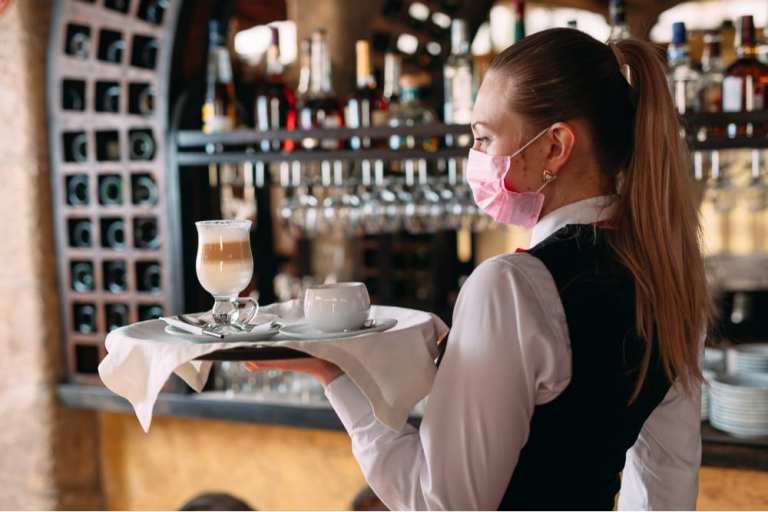
In a bid toward normality, states are reopening.
No surprise, after months of lockdown: We all want to get something to eat.
And we’d like to be safe when we get something to eat.
The great digital shift is in place, of course. PYMNTS research shows that during the pandemic, dining habits have shifted, with 35.3 percent reporting dining less at quick-service restaurants (QSRs) and 35.9 percent going to sit-down restaurants less often than in pre-pandemic days.
That might change a bit when this is all over.
To that end, in an interview with Karen Webster Chief Strategy and Operations Officer Joe Monastero at industry advocate Texas Restaurant Association and Chris Gillen, CEO of A Closer Look, which focuses on customer feedback, said returning to restaurants (a sector decimated by the coronavirus) can be eased by health and hygiene training, and a bit of texting too.
Last month, the two entities said they were working in partnership with Dallas College to train, inspect and certify restaurants, and their safety efforts, as they reopen in the wake of the pandemic.
In a nod to community efforts to boost customer experienced, individual consumers can report on health efforts at Texas eateries — and whether they are enforcing standards such as social distancing and more official standards mandated by the state’s governor.
As part of the program, the Texas Restaurant Promise Certification decal can be made visible on the doors of restaurants that graduate from the program. A Closer Look has said it is partnering with restaurants to identify and address potential “problem areas” (assessments are done through mystery shopping).
There’s a tech component — one that provides real-time information and feedback. By texting “SAFE,” Quiq’s artificial intelligence (AI)-powered chatbot leads through a three-question survey related to the health practices observed on site. That information is relayed in real time to corporate offices through a Trusted Partner Program.
Monastero said that the additional steps beyond the basic health and safety efforts at individual restaurants have been necessary to help revive an industry that, in Texas alone, has seen 700,000 employees (about half the roster, statewide) thrown out of work at the height of the shutdown. About 34 percent of restaurants shuttered, about 10 percent of the industry permanently.
For now, restaurants that are reopening are operating at 50 percent or less capacity, said Monastero, pressuring margins. The Texas Restaurant Promise Certification is covered under a grant by the Texas Workforce Commission. The initial tranche is enough for about 1,000 restaurants (with a total of 5,000 employees).
Monastero said the texting aspect of the initiative “nicely closes the circle and everything that started with the Texas Restaurant Promise to get the restaurants reopened and carry them through the entire pandemic and beyond. It keeps everyone involved in the process — and in a positive way.”
Gillen noted that 70 percent of A Closer Look’s portfolio pre-pandemic was tied to restaurants. The enterprise has been helping eateries improve their customer experience through surveys, mystery shopping and other efforts.
“We’ve quickly realized that the health and hygiene [concerns] were not going to go away anytime quickly,” said Gillen.
He projected that satisfaction with on-premise cleanliness may become “the new net promoter score.”
Asked about the initial reaction to the program, Gillen said “we’re either getting people that are going in and they’re blown away at the steps that the restaurant is taking, and then they’re praising the restaurant. Or they’re walking in and quickly identifying that the restaurant is not doing any of the things that they should. They’re giving very pointed feedback.”
The net result is that negative comments may be kept off social media (with attendant, perhaps irreparable, harm to restaurants encountering criticism), but those same firms are given opportunities to correct deficiencies — and perhaps change their workflows.
“I think that this is just a first step for what will become more of the new normal,” said Gillen.